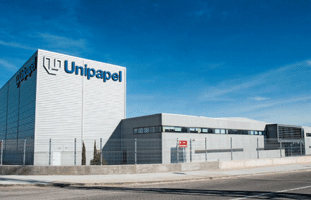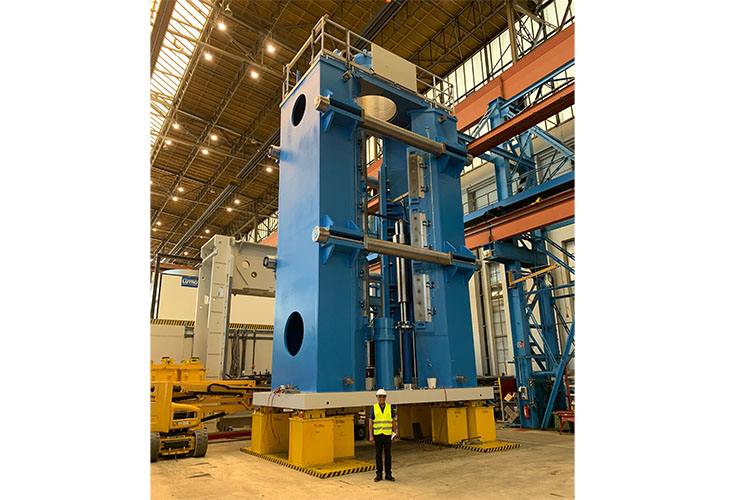Data center procurement faces numerous roadblocks, but a few creative solutions can help. Real estate and equipment acquisition are among the industry’s most pressing issues. How can project leaders overcome these challenges and gain a competitive advantage?
Rethink Data Center Construction
Several major challenges facing data center growth are tied to the building process. Data center power consumption is expected to double by 2030, indicating the high demand for more space. Unfortunately, building new facilities to meet that need is hampered by a few key roadblocks, including labor shortages, real estate competition and construction delays.
Data center developers can overcome these challenges by rethinking the conventional approach to the building process. For example, collaborating with smaller construction companies may help projects get around delays facing larger operations.
Large, established construction companies are typically in higher demand due to their connections with supply chain partners. Smaller businesses may have fewer links but more immediate availability. Data center developers can collaborate with them to build supply chain relationships and complete projects faster.
A New Approach to Land Purchasing
Data center procurement officers may also need to rethink real estate purchasing. The best land for these facilities is wide, flat spaces, often in rural areas or just outside urban centers. Unfortunately, this is the same type logistics companies want for warehouses, which are also exploding in demand.
As a result, data center developers may struggle to purchase land due to skyrocketing prices. Industrial land costs grew 41% in 2021, and many companies are now paying millions of dollars per acre.
Some data center developers can reduce competition and purchasing costs by focusing on land further from urban areas and buying smaller plots. Building smaller facilities may be less expensive than developing a few large centers since warehouses will be competing for the largest tracts of industrial land.
Data centers don’t need to be as close to cities and suburbs as warehouses do and don’t necessarily need hundreds of thousands of square feet of space. Developers can use this greater flexibility to buy land that isn’t ideal for warehouses, saving money and dodging industrial land shortages simultaneously.
Get Creative With Equipment Procurement
Supply chain issues are a particularly big issue for data centers due to the ongoing semiconductor shortage. Key materials like steel and iron are also in demand. Luckily, there is hope for the chip shortage. Dozens of high-capacity chip fabs have broken ground since 2021, so manufacturing capacity will increase significantly soon.
Until then, data center procurement requires some creativity. Key solutions include purchasing recertified equipment, changing suppliers and overstocking when necessary.
Pivot to Alternative Suppliers
One of the biggest challenges in data center procurement is the long delays facing international suppliers. A highly dispersed supply chain is more prone to setbacks. Facility managers should consider reshoring and building relationships with domestic suppliers.
Many data centers source their equipment from several vendors. Sometimes this can help dodge shortages, but it can also create more complicated logistics that increase the likelihood of procurement issues. Data center managers should identify one main vendor with strong supply chain connections to handle all their equipment sourcing.
This approach to equipment procurement can streamline the supply chain and build a priority relationship with vendors. For instance, one data center company that pivoted to a single primary vendor experienced fewer inventory management issues and better interoperability with its equipment.
Pivoting to one main vendor is particularly effective when shifting from international suppliers. Many supply chain delays occur when goods need to move through ports. Wait times in Southern California can be several days, not including the additional time required to unload a ship once docked.
Working with domestic suppliers can help data centers avoid or minimize delays and expenses due to international shipping.
Consider Used or Recertified Equipment
One creative way to get around chip shortage issues is purchasing used instead of new equipment. As the overall data center market grows, so does the need for used gear, from processors and RAM to cooling components and server racks. Most of these items are still perfectly usable with a little cleaning and refurbishment.
Purchasing used data center equipment comes with a few benefits. It minimizes the impact of chip shortages by reducing reliance on the new equipment market. Used machinery is also better for the environment and is often available at lower prices.
There’s a misconception that used equipment is lower quality than new. This is often not the case. Even data center industry leader AWS reuses its retired server equipment after a refurbishment process.
Data center managers should always consider opportunities to purchase or refurbish used, retired and decommissioned equipment. This gear is a gold mine of value amid an ongoing chip shortage.
Overstock When Equipment Is Available
Overstocking is a controversial approach to supply chain issues. After all, shortages will only get worse if everyone begins buying more equipment than they need. However, data center procurement officers can implement overstocking responsibly regarding parts with inconsistent availability.
A data center manager might know they will need a certain amount of a component. Overstocking is generally OK when the units will go to use but availability is unreliable. Procurement leaders should purchase the equipment they need when it’s available in large supply so they know they will have it stocked.
Overcoming Data Center Procurement Challenges
Data center procurement faces several roadblocks today, but developers and managers can use creative strategies to get ahead. Buying different types of land, designing small-scale facilities, working with smaller construction companies and pivoting to alternative suppliers can help data centers overcome today’s challenges.


























